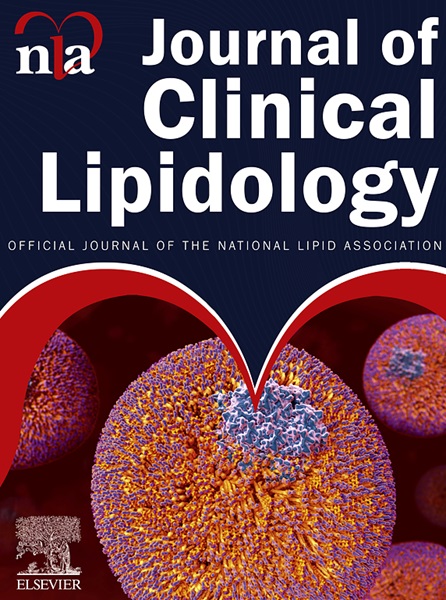利用创新性实施策略治疗家族性高胆固醇血症:IMPACT-FH 研究的实施成果
IF 3.6
3区 医学
Q2 PHARMACOLOGY & PHARMACY
引用次数: 0
摘要
级联检测可有效识别家族性高胆固醇血症(FH)患者,并有助于预防动脉粥样硬化性心血管疾病。IMPACT-FH级联检测项目提供了多种优化实施策略,以提高FH级联检测的接受率。在实施研究概念模型的指导下,本研究对 IMPACT-FH 级联检测计划的实施结果进行了评估。对实施结果进行了定性和定量评估。研究人员对 33 名 IMPACT-FH 项目参与者进行了访谈,其中包括 15 名受试者、12 名亲属和 6 名医疗保健专业人员 (HCP)。采用主题分析法对访谈记录进行分析,以调查实施结果。对访谈后提出的实施结果量表进行了描述性统计分析。参与者描述了采用 IMPACT-FH 计划提供的策略的原因,因为这些策略提供了进行低成本血脂串联检测的机会。参与者指出了可行性障碍,包括:披露 FH 结果和提供相关策略的复杂性、原告选择策略的固有局限性、对检测成本的困惑、与亲属临床医生分享的局限性、对聊天机器人技术的不适应以及对 HCP 工作量的担忧。参与者对项目的适宜性(平均值 (M) = 4.70,标准差 (SD) = 0.41)、可接受性(平均值 = 4.79,标准差 = 0.40)和可行性(平均值 = 4.24,标准差 = 0.53)给予了积极评价。参与者认为,IMPACT-FH 级联测试计划及其策略有采用价值,且非常适合、可接受和可行。参与者指出了该计划需要改进的地方,这些改进可以提高 FH 级联检测的接受率。本文章由计算机程序翻译,如有差异,请以英文原文为准。
Utilizing innovative implementation strategies for familial hypercholesterolemia: Implementation outcomes from the IMPACT-FH study
BACKGROUND
Cascade testing can be highly effective in identifying individuals with familial hypercholesterolemia (FH) and help prevent atherosclerotic cardiovascular disease. The IMPACT-FH cascade testing program offered multiple optimized implementation strategies to improve FH cascade testing uptake.
OBJECTIVE
Guided by the Conceptual Model of Implementation Research, this study assessed the IMPACT-FH cascade testing program's implementation outcomes.
METHODS
Implementation outcomes were assessed qualitatively and quantitatively. Interviews were conducted with 33 IMPACT-FH program participants including 15 probands, 12 relatives, and 6 healthcare professionals (HCPs). Transcripts were analyzed using thematic analysis to investigate implementation outcomes. Descriptive statistics were analyzed for scaled implementation outcome measures asked after interviews.
RESULTS
Participants described adopting strategies offered in the IMPACT-FH program because they presented an opportunity to pursue low-cost FH cascade testing. Participants identified barriers to feasibility including: the complexity of disclosing an FH result and offering strategies, inherent limitations of probands choosing strategies, confusion over testing costs, limitations sharing with relatives’ clinicians, discomfort with chatbot technology, and concerns about the workload for HCPs. Participants evaluated the program positively regarding its appropriateness (Mean (M) = 4.70, Standard Deviation (SD) = 0.41), acceptability (M = 4.79, SD = 0.40), and feasibility (M = 4.24, SD = 0.53).
CONCLUSION
The IMPACT-FH cascade testing program and its strategies were evaluated as valuable to adopt and highly appropriate, acceptable, and feasible by participants. Participants identified areas to enhance the program that could improve FH cascade testing uptake.
求助全文
通过发布文献求助,成功后即可免费获取论文全文。
去求助
来源期刊
CiteScore
7.00
自引率
6.80%
发文量
209
审稿时长
49 days
期刊介绍:
Because the scope of clinical lipidology is broad, the topics addressed by the Journal are equally diverse. Typical articles explore lipidology as it is practiced in the treatment setting, recent developments in pharmacological research, reports of treatment and trials, case studies, the impact of lifestyle modification, and similar academic material of interest to the practitioner.
Sections of Journal of clinical lipidology will address pioneering studies and the clinicians who conduct them, case studies, ethical standards and conduct, professional guidance such as ATP and NCEP, editorial commentary, letters from readers, National Lipid Association (NLA) news and upcoming event information, as well as abstracts from the NLA annual scientific sessions and the scientific forums held by its chapters, when appropriate.

 求助内容:
求助内容: 应助结果提醒方式:
应助结果提醒方式:


